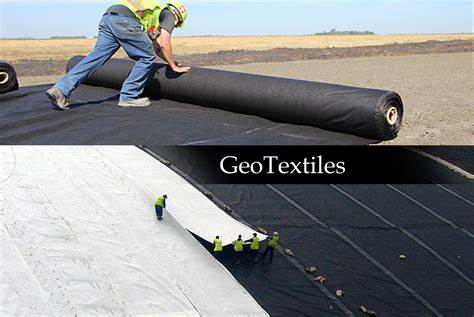our products
Geo Textile
Geotextiles are permeable fabrics made from synthetic materials such as polypropylene or polyester. They are used in civil engineering and environmental applications to separate, filter, reinforce, protect, or drain soil. Geotextiles play a critical role in extending the life of infrastructure by enhancing soil behavior and performance under loads.
They are generally classified into two main types:
- Woven Geotextiles – Made by interlacing yarns in a regular pattern.
- Non-Woven Geotextiles – Made by bonding fibers using chemical, heat, or mechanical processes.
Call us for more info
(+91) 74066 06633

Product Description:
Geotextiles are permeable fabrics made from synthetic materials such as polypropylene or polyester. They are used in civil engineering and environmental applications to separate, filter, reinforce, protect, or drain soil. Geotextiles play a critical role in extending the life of infrastructure by enhancing soil behavior and performance under loads.
Key Features:
- Material: Polypropylene (PP) or Polyester (PET)
- Type: Woven or Non-Woven
- High Permeability: Allows water to pass while retaining soil particles
- UV Stabilized: For outdoor and exposed applicationsExcellent Tensile Strength: Supports load-bearing functions
- Lightweight & Easy to Handle
- Resistant to Chemicals & Biological Degradation
Benefits of Using Geotextiles
- Geo textiles are used to protect coastal property from sand waves and floods. Geo textiles can improve the soil strength at a lower cost than the conventional pipes.
- Geo textiles have been used to protect the hominid footprints of Laetoli’s fossils in Tanzania from the rains and tree roots.
- Geotextile plays an important role in drainage and are used in playgrounds.
- Coir geotextiles are popular for corrosion control and biotechnology, due to the significant mechanical strength of the fabric. To enrich the soil, the product moisture is reduced.
- Geo textiles are used extensively as separators of the two layers of soil. Jute geo textiles are used to prevent mountain landslides.
Some of the notable uses of geotextiles-
- Temporary & Permanent Roadways, Parking lots & Construction sites.
- River, Canals & Coastal works.
- Filtration& Drainage
- Separation
- Agriculture
- Railway works
- Reinforcement
- Protection& erosion control
- Retaining wall structures
- Embankments etc.
Typical Technical Specifications:
| Property | Woven Geotextile | Non-Woven Geotextile |
|---|---|---|
| Mass per Unit Area | 100 – 400 g/m² | 100 – 1000 g/m² |
| Tensile Strength | > 25 kN/m | > 8 kN/m |
| Elongation | < 25% | > 50% |
| Permittivity | Moderate | High |
| Puncture Resistance | High | Moderate |
| UV Resistance | High | High |
| Thickness (Typical) | 0.5 – 2 mm | 1 – 5 mm |
| Water Flow Rate | Moderate | High |
| Aperture Size (EOS) | 0.05 – 1 mm | 0.05 – 0.3 mm |
Note: Values vary depending on product grade and application. Custom specifications available upon request.